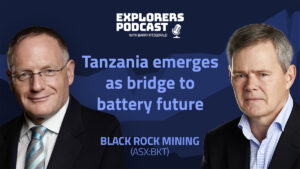Rio ups strategic Sovereign stake to 19.9%

The Kasiya project contains 1.8bt at 1% rutile and 1.4% graphite. Pic: Getty Images
- RIO has increased its stake in SVM from 19.76% to 19.9%
- SVM owns the world’s largest rutile and second largest flake graphite project
- Company recently produced anode material from graphite feedstock suitable for battery production
Special Report: Mining giant Rio Tinto has upped its strategic stake in Sovereign Metals, owner of the world class Kasiya rutile and graphite project in Malawi, to 19.9%.
That’s up from 19.76% in July.
Last year, the mining giant made a strategic investment in the company, spending $40.4m to take an initial 15% stake in Sovereign Metals (ASX:SVM). Kasiya ranks as the world’s largest rutile and second largest flake graphite deposit, marking the investment as a major step into the battery metal for Rio.
It’s a double hit for Rio, which already produces titanium dioxide feedstocks from mineral sands operations in South Africa and Madagascar.
Sovereign’s Kasiya orebody in Malawi contains a whopping 1.8Bt at 1% rutile and 1.4% graphite, two-thirds of that in the higher confidence indicated category.
Clearly bullish on the electric vehicle supply chain as a long term thematic, Rio’s initial investment into SVM focused heavily on plans to qualify the graphite product from the deposit for use in lithium-ion battery anodes.
This latest announcement consists of Rio making an additional investment of A$690,360 in SVM through the issue of 1,290,392 shares, pursuant to Rio’s first right of refusal on equity issues.
Graphite by-product a bonus
Natural rutile supplies are depleting, facing severe deficits within five years, with Kasiya the largest discovery in history and first of significance globally in 50 years.
But Sovereign’s trump card is its graphite by-product, which could reduce its all-in sustaining costs and make it a low-cost supplier to challenge Chinese dominance of a key part of the lithium-ion supply chain, especially considering China’s recent restrictions on graphite exports.
Kasiya would cost US$597m to build but generate US$415m in average annual EBITDA and US$16bn in revenue over its first 25 years of operations, according to a pre-feasibility study released last year.
At 222,000tpa it would be the world’s largest single rutile operation and one of the largest ex-China flake graphite producers at 244,000tpa.
Costs of US$404/t would make it the lowest cost producer of both products around the world.
Looking forwards
Last week, the company flagged that anode material produced using Kasiya graphite feedstock is suitable for battery production, achieving first cycle efficiencies of 94.2% to 95.8% along with initial discharge capacity of 362-364mAh/g.
For context, that’s comparable to the highest quality battery material produced by Chinese anode manufacturers.
SVM is currently conducting an optimisation study ahead of a planned definitive feasibility study, the required assessment to support a final investment decision.
This article was developed in collaboration with Sovereign Metals, a Stockhead advertiser at the time of publishing.
This article does not constitute financial product advice. You should consider obtaining independent advice before making any financial decisions.
Related Topics

UNLOCK INSIGHTS
Discover the untold stories of emerging ASX stocks.
Daily news and expert analysis, it's free to subscribe.
By proceeding, you confirm you understand that we handle personal information in accordance with our Privacy Policy.








